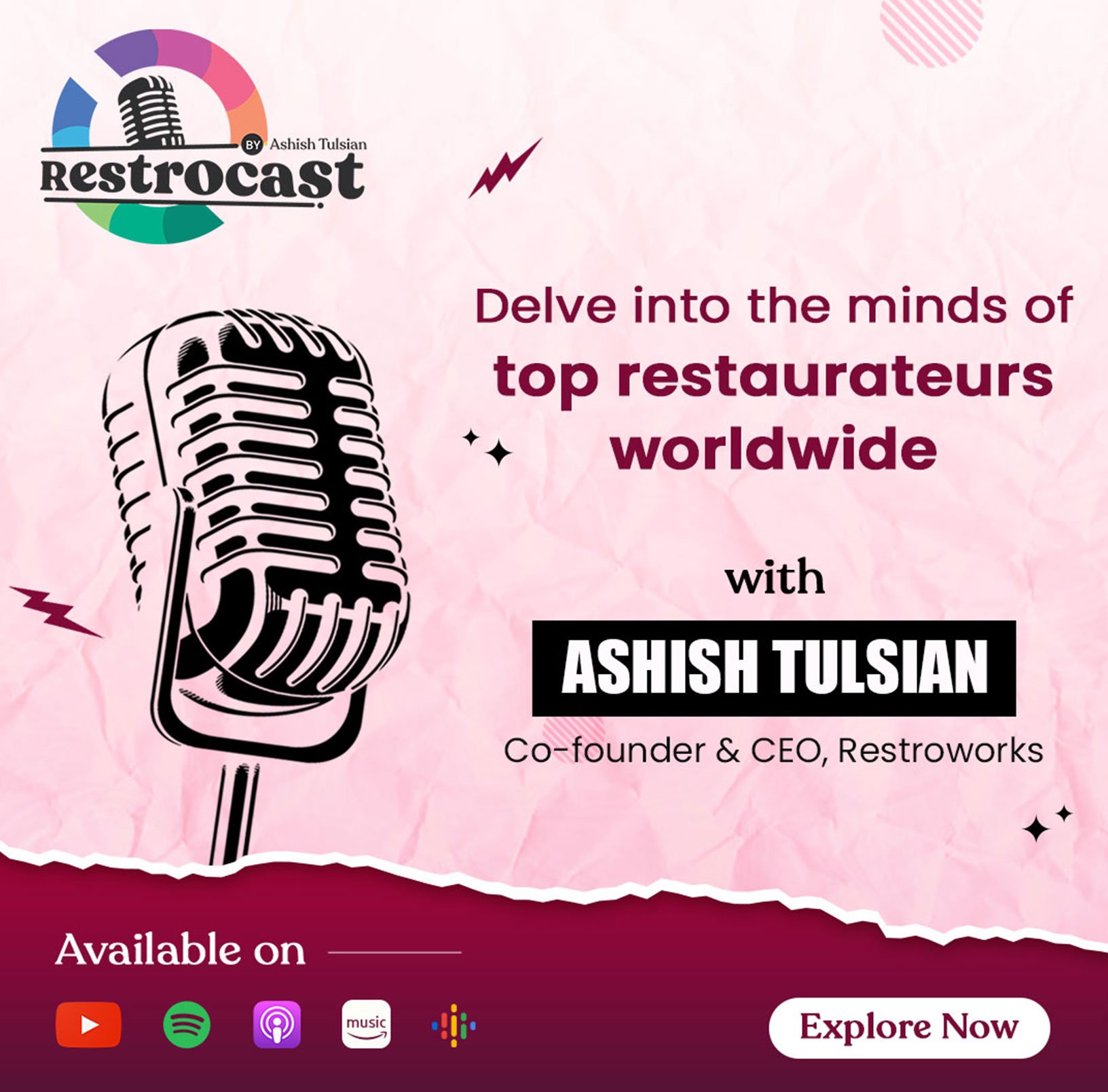
Remember juggling during lunch rush, patties running low, and the delivery truck was nowhere in sight? It’s no joke! In India alone, this scenario plays out in over 10,000 fast-food locations, an industry exceeding ₹30,000 crores! This is where supply chain management for fast food restaurants becomes crucial.
But what exactly goes on behind the scenes? Let’s delve into the six critical components of a successful QSR supply chain optimization:
1. Sourcing: Finding the best suppliers for your ingredients and supplies, ensuring quality and price competitiveness. Remember, the fresher the ingredients, the happier your customers.
2. Production: Meeting demands while maintaining all quality standards. This involves efficient supplier management to secure reliable sources and cost-effective supply chain strategies.
3. Distribution: Getting those golden fries and sizzling burgers from the supplier to your restaurant quickly and efficiently, minimizing spoilage and waste.
4. Inventory Management: Keeping track of everything from ketchup packets to burger buns, preventing shortages and overstocking.
5. Transportation: Choosing the most efficient and cost-effective way to transport your goods, whether it’s by trucks or specialized delivery services.
6. Customer Service: Providing excellent service to your restaurants and their customers, addressing any issues promptly and efficiently.
From farm to fork, a dedicated network of suppliers, manufacturers, distributors, and staff work tirelessly to make your fast-food experience satisfying.
How can the Supply Chain Management become future ready?
We all have had those days of frantic phone calls to suppliers, begging for that crucial ingredient to keep the menu complete. Or the frustration of watching food waste pile up due to inaccurate forecasting. Easily a resounding Yes! In the fast-paced world of QSR, a reliable and efficient supply chain practices is a survival essential. But in a landscape constantly evolving, how can your supply chain be ready for anything?
1. Introduce automated Inventory management
Raise your hands if you’ve ever uttered the dreaded “sorry, we’re out” to a hungry customer. We’ve all been there, and it’s a recipe for frustration for both sides. That’s where automated inventory management for fast food restaurants comes to the rescue.
Imagine an AI analyzing your sales data and noticing a surge in “Double Bacon Cheeseburger” orders. It automatically triggers a purchase order for buns, ensuring you have a fresh batch ready before your current supply runs out. The system automatically tracks stock levels, places orders, and even generates reports, freeing up your staff to focus on what they do best – providing amazing service and creating a memorable dining experience.
It’s not just about avoiding stockouts – it’s about ensuring supply chain visibility and tracking, reducing costs, and ultimately, delivering a consistently delicious and satisfying experience for your customers.
2. Build Stronger Supplier Partnerships
McDonald’s didn’t become a global powerhouse by accident. Their success hinges on strong supplier partnerships. This approach, known as the 3-legged stool, emphasizes mutual positive outcomes for franchisees, suppliers, and employees.
Instead of simply exchanging value, this collaborative model focuses on creating value for each other. This leads to long-term partnerships, like the one with The Martin-Brower Company, who have been McDonald’s trusted supplier for over 60 years. They’re not just delivering buns and ketchup; they’re partners in innovation. Together, they’ve developed new packaging solutions to minimize waste and optimize delivery routes, saving costs and reducing environmental impact.
Imagine that Saturday morning egg crisis. With a strong supplier partnership, it wouldn’t have happened. The Martin-Brower Company, aware of McDonald’s peak demand periods, ensures consistent and timely deliveries, preventing disruptions and keeping customers happy. And let’s not forget the power of collaboration in driving innovation. Picture the iconic Chicken McNugget – a product born from a partnership between McDonald’s and their meat & fish supplier, Keystone Foods.
Take a page out of McDonald’s playbook and invest in building strong supplier partnerships. It’s not about bagging a cheap deal; it’s about creating a win-win situation that benefits everyone involved.
3. Optimize Logistics and Distribution channels
We all know the pain of a customer complaining about a cold, soggy burger. It’s a heartbreaker for both them and your bottom line. Connecting the dots between operational efficiency and the right software can be the game-changer you’ve been waiting for. And what’s at the heart of operational efficiency? You guessed it – logistics and distribution!
Gone are the days of relying on outdated methods for logistics and distribution in fast food restaurants. Choose logistics partners who specialize in the fast-food industry and understand the importance of speed and efficiency. Look for companies with temperature-controlled vehicles, dedicated delivery personnel, and innovative solutions like drone delivery for high-demand areas. Remember, the right partner can be the difference between a satisfied customer and a hangry mob.
4. Mitigate risks with technology integration
We all know the panic that sets in after your fry machine throws a tantrum just before the lunch rush. Or getting cold feet during a health inspection? Supply risk disruption mitigation isn’t just about keeping your burgers hot. It’s about protecting your whole operation from hiccups that can leave your customers cold and your bottom line singed.
Thankfully, technology is not the latest menu item; it’s your secret weapon for a solid supply chain risk management. Think AI predicting fryer meltdowns before they happen, digital food safety shields keeping inspectors at bay, and self-service kiosks calming the hangry hordes. Take Popeyes in Louisiana, who used voice bots in their drive-thru. Not only did service speed increase by 20%, but drink sales soared by 150%! “Tori” the bot automatically upsold high-margin items. Note that integrating technology in supply chain management isn’t just about fancy gadgets; it’s about building a resilient, customer-centric, and ultimately profitable business.
The way ahead
Thanks to the booming QSR industry in India, with 428 active brands and $1.3 billion in recent investments, this isn’t just a dream, it’s the future of fast food.
However, navigating this industry is not easy. Stockouts, soaring costs, and unreliable deliveries can turn your dream into a disaster. You need strategic investments in supply chain management to truly transform your business.
Imagine this:
- No more frantic dashes to the grocery store.
- Suppliers become your partners, not just vendors.
- Your deliveries work like a well-choreographed ballet.
This is the reality of optimized supply chains.
Remember, your supply chain isn’t just a back-office operation; it’s the backbone of your business. By choosing the right tools and strategies, you’ll create a domino effect of success, one satisfied customer at a time.
Frequently Asked Questions
1. What are the key challenges of supply chain management in fast food restaurants?
- Dealing with food means high costs, limited shelf life, and temperature issues
- Predicting how many burgers to make can be tough, leading to waste or disappointed customers
- Balancing the right amount of ingredients
- Identifying problems and tracking food safety
- Unexpected events like floods
2. What is supply chain in the fast food industry?
Think of it as the entire journey your food takes before it ends up on your plate. It starts with sourcing ingredients from farms and factories, then getting them to the restaurant at the right time and in perfect condition. It’s a complex network that needs to run smoothly for a delicious outcome.








